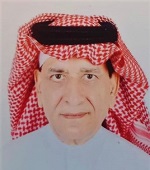

invited speakers
Title: Perovskite Materials and Their Applications in Renewable Energy Harvesting and Storage |
|
|
M. A. Gondal
- Prof., Dir Laser Research group King Fahd University of Petroleum and Minerals (KFUPM) Saudi Arabia |
|
|
Abstract:
One of the most successful methods for supplying the whole globe with cheap, clean, and sustainable energy is irrefutably the solar energy. Recently the photovoltaic (PV) solar cells prices have dropped significantly as the number of installations of such systems have increased, which makes PV Solar cells economically viable with traditional energy sources, such as coal, oil and natural gas-based power plants in many regions. In addition, their heavy operational cost for non-oil producing countries, injurious to the environment and climate change, fast depletion of fossil fuels, such power plants are not practicable for long term. Perovskites solar cells (PSC) are at the forefront of emerging photovoltaic technologies due to their attractive characteristics like high light absorption, tunable optical properties, long diffusion length, low cost, and easy fabrication. |

M. A. Gondal, Ph.D. |
|
Such unique features coined the perovskite materials, very attractive for many optoelectronic applications for the development of improved light detectors, lasers, solar cells, and LEDs. Due to these attributes, their power conversion efficiencies (PCEs) is rising rapidly and constantly improving with time. It is true to say that Perovskites have the steepest rise of efficiency as a function of time of all the existing solar cell materials, which makes them a game-changers in a photovoltaic performance race in near future
Our group has focused on development of third generation solar cells which known as dye sensitized solar cells (DSSC) and perovskite solar cells (PSC). Our main focus for third generation solar cells is to improve the efficiency by using materials which absorbs over a broad band of solar energy (visible and near infrared) and less expensive and stable. In this work, we succeeded to prepare perovskite bulk and thin single crystals which were grown using Inverse thermal crystallization method. The single crystals PSC were characterized using advanced analytical technique such as optical microscope for optical images, scanning electron microscope (SEM) for electron images, X-ray diffraction (XRD) and spectrofluorometry. Finally, Single crystals based perovskite solar cells were fabricated which exhibited higher efficiency as compared to the poly crystalline based solar cells. However, issues related to stability have become the bottleneck in their commercialization. In addition to PSC developments, perovskite materials were also applied for energy storage devices (super capacitors, light sensitive supercapacitors) and perovskite-based photo-detectors. Depending on the duration of the talk, some of these important and golden promises and challenges in perovskite solar cells will be discussed and presented. |
|
|
Speaker Biography:
Dr. Mohammed Ashraf Gondal is a Distinguished Professor at the Physics Department, Director/Coordinator of Laser Research Group at King Fahd University of Petroleum and Minerals (KFUPM), Senior Research Fellow of K. A. CARE, and Visiting World Class Professor (MOE Indonesia). He received his Ph.D. degree in Applied Physics from the University of Bonn (Germany). He worked on many collaborative research projects with scientists from world-renowned universities including MIT, Free University Berlin, Heidelberg University Germany, Nanjing University China, NUS Singapore, and the University of Exeter England. His research interests are in the areas of lasers, nanotechnology, photonics, quantum optics, materials science, renewable energy harvesting (third generation solar cells), energy storage (supercapacitors), applied/chemical physics, sensors, laser remote sensing (LIDAR), environmental pollution monitoring, development of laser-based analytical techniques (PAS, LIBS, LEI), wetting & nonwetting surfaces for oil-water separation & self-cleaning applications, synthesis of nano-composites and quantum dots using novel Pulsed Laser Ablation in Liquids Technique (PLAL) as well wet chemical methods and their novel applications in corrosion inhibition, petrochemicals, photo-catalysis for production of high-value hydrocarbons (CO2 utilization) , green hydrogen production by water splitting, removal of organic pollutants as well water disinfection of bacteria and pathogens, cancer treatment. In addition to cutting-edge applied research, he is working on the design and fabrication of lasers as well as laser-induced atomic and molecular spectroscopy as fundamental research for the understanding of the dynamics of atoms and molecules. Dr. Gondal has published over 601 research papers in international journals & conferences, a book as well as 13 book chapters, 30 US patents, H-index 57, and over 12740 citations. He is a member of numerous international journal editorial boards and winner of many national and international awards including the prestigious Al-Marai Scientific Innovation Prize. Based on his high number of citations, H index, and ISI publications, he has been listed among the Top 2 % of world-renowned scientists consecutively over the last few years as per data published by Stanford University, each year. Due to his Distinguished Contribution to science, education and community services to the Kingdom , he has been honored with Saudi Citizenship by His Majesty King Salman Ben Abdulaziz. | |
Title: Near-Infrared Spectroscopy and AI for Non-Invasive Pervasive Glucose Monitoring |
|
|
Maria Valero de Clemente
- Dir., Internet of Things as Service Research Group College of Computing and Software Engineering / Information Technology Kennesaw State University |
|
|
Abstract:
The United States is facing diabetes and metabolic disease epidemic, with more than 11.33% of the population suffering from diabetes, and 30\% of metabolic syndrome. The lead indicator of these diseases is the Blood Glucose (BG) concentration. Measuring BG involves either painful blood extraction multiple times per day, insertion of needles inside the body, or using non-invasive devices that lack accuracy. While the development of non-invasive methods is progressing, the current approaches do not present high accuracy. |

Maria Valero de Clemente, Ph.D. |
| Using a powerful machine-learning model, the device captures and processes spectroscopy images of a body’s extremities. The spectroscopy or spectral image is based on the theory of light intensity data from the spectrum. Using light absorption, the proposed sensor executes a model that permits glucose estimation. The procedure is noninvasive, as no blood or needles are required. The device also pairs the information to a mobile application for real-time monitoring. Preliminary studies show an accuracy of 90.78% compared with traditional blood glucose estimation. | |
|
Speaker Biography:
Dr. Valero is an assistant professor in the College of Computing and Software Engineering, Department of Information Technology at Kennesaw State University (KSU). She received her Ph.D. in Electrical and Computer Engineering at the University of Georgia. She was an associate professor at the University of Tachira (Venezuela) from 2004 to 2015. Dr. Valero is the Director of the IoT as Service Research Group at the College of Computing and Software Engineering. Her research group investigates the use of IoT and sensor devices as a service for healthcare and cybersecurity. In the healthcare path, Dr. Valero's group is focused on implementing signal processing and advanced machine learning techniques to understand sensorial data for remote and non-invasively monitoring of the human body and certain diseases like diabetes, heart rate complications, and brain issues. She has been the lead PI of NSF and NIH awards related to device technologies for healthcare. | |





 conference program
conference program
